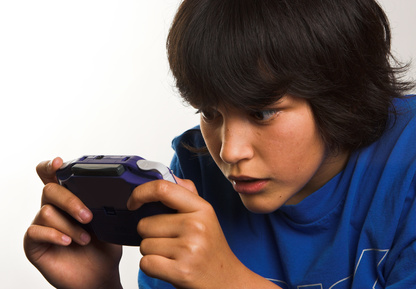Kids who have been diagnosed with ADHD or Autism Spectrum Disorder are often more prone to repetitive or obsessive behavior. They struggle in making transitions and tend to become more irritable when required to change from a preferred activity to something else. They also have greater tendencies towards addictive behavior. These characteristics are all problematic when it comes to playing the highly engaging game of Fortnite. Fortnite draws kids into lengthy game play by its sandbox nature, where the landscapes, chests that provide weapons and tools, and skins (costumes) are always changing. It also keeps players engaged with variable reinforcement schedules. Players can get closer and closer to winning at times, compelling them to want to jump right back into the game, often playing for hours on end. Kids with ADHD and Autism Spectrum Disorder report that Fortnite can be incredibly exciting and stimulating, but it may also be difficult for them to disengage.
Another concern for kids with ADHD and autism is the banter that occurs on Fortnite between players. My patients describe the conversations as graphic at times, and the potential for inappropriate language is high. Kids on the spectrum may have difficulty in keeping up with the banter and understanding the nature of it, becoming overly upset in a world that may be unsafe for them at times. For kids with ADHD, difficulty in understanding social cues and behaving impulsively in game play can cause stress in their interactions with others.
Fortnite is the latest popular game where parents of children with ADHD and Autism Spectrum Disorder need to become more aware and tuned into their children’s actions and behavior. Kids with these types of difficulties need parents to be more involved in their technology use. While there are many benefits to technology use for kids with ADHD and autism, younger children in particular tend to get the most from their screen time when their parents observe them in game play, protect them from some of the online risks, and participate with them in social media engagement.
Here are some recommendations about how to handle Fortnite, video games, and social media for children with ADHD and autism:
Set strict limits on screen time for children who are alternative learners. Children who struggle in school or have been diagnosed with Attention-Deficit/Hyperactivity Disorder, a Learning Disability, or Autism Spectrum Disorder are more likely to find it difficult to transition from digital play to other activities. Those who display anger and frustration when being told to stop digital play may require more stringent strategies to limit screen time. Learn more about these approaches in articles such as Setting Screen Time Limits by Scheduling and When a Play Diet Isn’t Enough.
Play video games during screen time with your child. The best way to learn about what children are doing is to demonstrate an interest in their activities. Playing with children, particularly those who tend to overdo their screen time, could at least open their minds to hearing your opinions about this. Check out this article and try to find technology that you could enjoy with your family, even if you do not particularly care for video games or social media.
Individualize limits and rules on screen time. Use your own sensibilities and your child’s unique developmental, social, psychological, and educational needs when it comes to limiting digital play. A parent may choose to set limits on military, fighting, and first-person shooter games due to the potentially violent nature of these games. Children who struggle with academics could benefit from having a higher proportion of the games and technologies they use confer clear educational benefits.
Allow your child to use technologies that build interpersonal skills. Many of the best games and apps are designed to be used jointly with other people, involving interaction and engagement with others. Watching a movie together can be a fantastic family experience, and one of the most beneficial aspects of family movie night is the opportunity for physical closeness and discussion. With video games and other technologies, social skills are developed through collaboration, communication, and teamwork. Multiplayer games require awareness of one’s strengths and weaknesses along with those of co-players, as well as the ability to communicate ideas and feelings in an effective manner.





He clearly likes it!